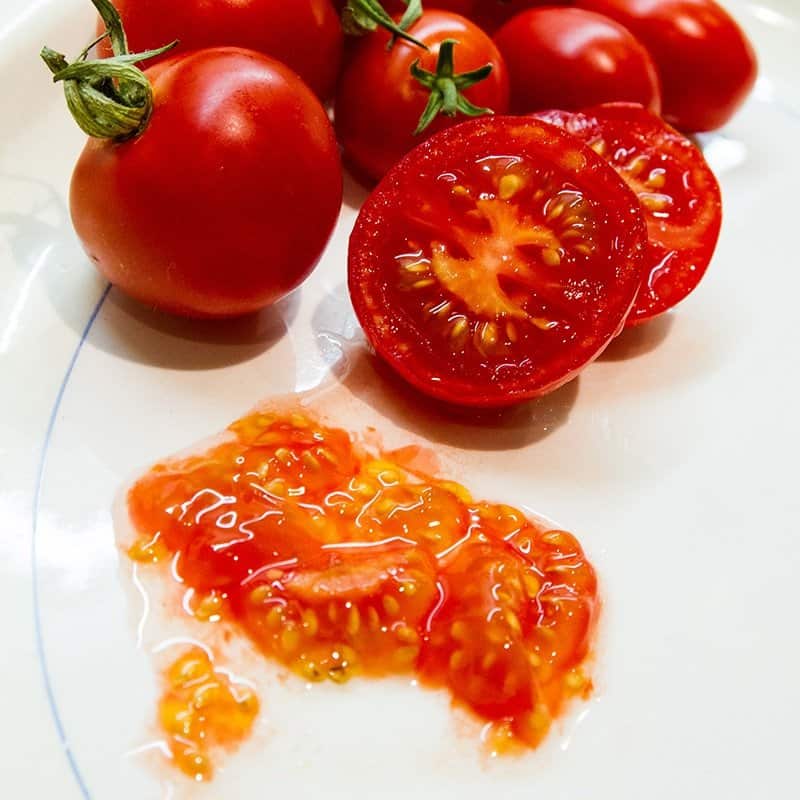
When a tomato or pepper plant produces well, there’s always an urge to collect seeds and try to repeat success next summer. The process of saving seeds can be as easy as collecting and drying pepper seeds, and safely packaging them for next year. Or it can be a bit more complicated if you want to save tomato seeds, which require fermentation to remove their germination inhibitors. But it’s all worthwhile if this summer’s delicious crops can produce seeds for next year’s harvest.
Bear in mind that seeds from hybridized plants may not produce an exact replica of the parent, and this second generation may have less desirable characteristics. Seeds from open-pollinated plants will produce plants similar or identical to their parent. However, sometimes open-pollinated species can cross-pollinate, producing a resulting fruit different from either parent. Seed packets and catalogues will tell you if your plant is a hybrid or open pollinated. Some saved seed I’ve grown from hybrid plants has come true in the second generation, and then reverted to its ancestors in the third generation. But whatever you get, it will be a worthwhile plant, because you grew and saved the seed yourself.
Pepper seeds are the easiest to save. (If saving hot pepper seeds, you may want to wear thin latex gloves.) Let the peppers reach their fully ripened colour while still on the plant. Cut the pepper open, remove and separate the seeds, and clean off any clinging filaments. Set them on a ceramic or glass plate to dry, making sure none overlap or touch. Place the plate in a dry environment indoors, and test for dryness every other day by taking a seed in your fingers and trying to bend it. Pepper seeds are adequately dry and ready to store in heavy paper envelopes when they crack in half. If the seeds are flexible and bend, they need more drying time.
Tomato seeds enjoy such a warm and wet environment that germination inhibitors are necessary to keep them from sprouting while still inside their fruits. The chemical inhibitors are in the liquid gel surrounding the seed clusters, and need to be eliminated for successful germination. Unfortunately, simply washing the seeds isn’t enough. A fermentation process, mimicking the tomato’s natural rotting as it ages, is necessary to remove inhibitors from the seed coats. Fermentation also kills any tomato disease pathogens that could infect next year’s plants.
Place the seeds and any gel clinging to them in a jar with an equal volume of water, and stir or swirl vigorously twice a day during the fermentation process. Keep the uncovered jar in a warm place to speed fermentation. The liquid will begin to form mould on the surface, and have an unpleasant odour (keep it out of the kitchen). When bubbles begin to appear on the surface or the mould layer has thickened, add more water to stop the fermentation, stir vigorously, and watch for the viable seeds to drop to the bottom of the jar. Pour off any seeds that float, and catch the viable seeds at the bottom in a fine sieve. Wash them with clear water, blot them dry on a paper towel, and set them on a ceramic or glass plate to dry. Seed left to dry on paper towel will adhere to the surface and be damaged in removal.
When tomato seeds are simply washed and dried without any kind of fermentation, they will likely germinate poorly the following year. If fermenting the seed seems entirely too much fuss (and possibly disgusting!), here’s an idea. As an experiment, allow some tomatoes to remain on the plant until they begin to rot. If the tomatoes fall off the vine, set them in a plastic or metal dish in the sun, leaving them whole and uncut. Allow the tomatoes to rot naturally, until they collapse and most of the moisture has evaporated. Use a knife to separate out the seeds, wash them in water and dry them indoors on a ceramic dish. This natural method just might be a good shortcut to next year’s tomato crop.

Leave a Reply